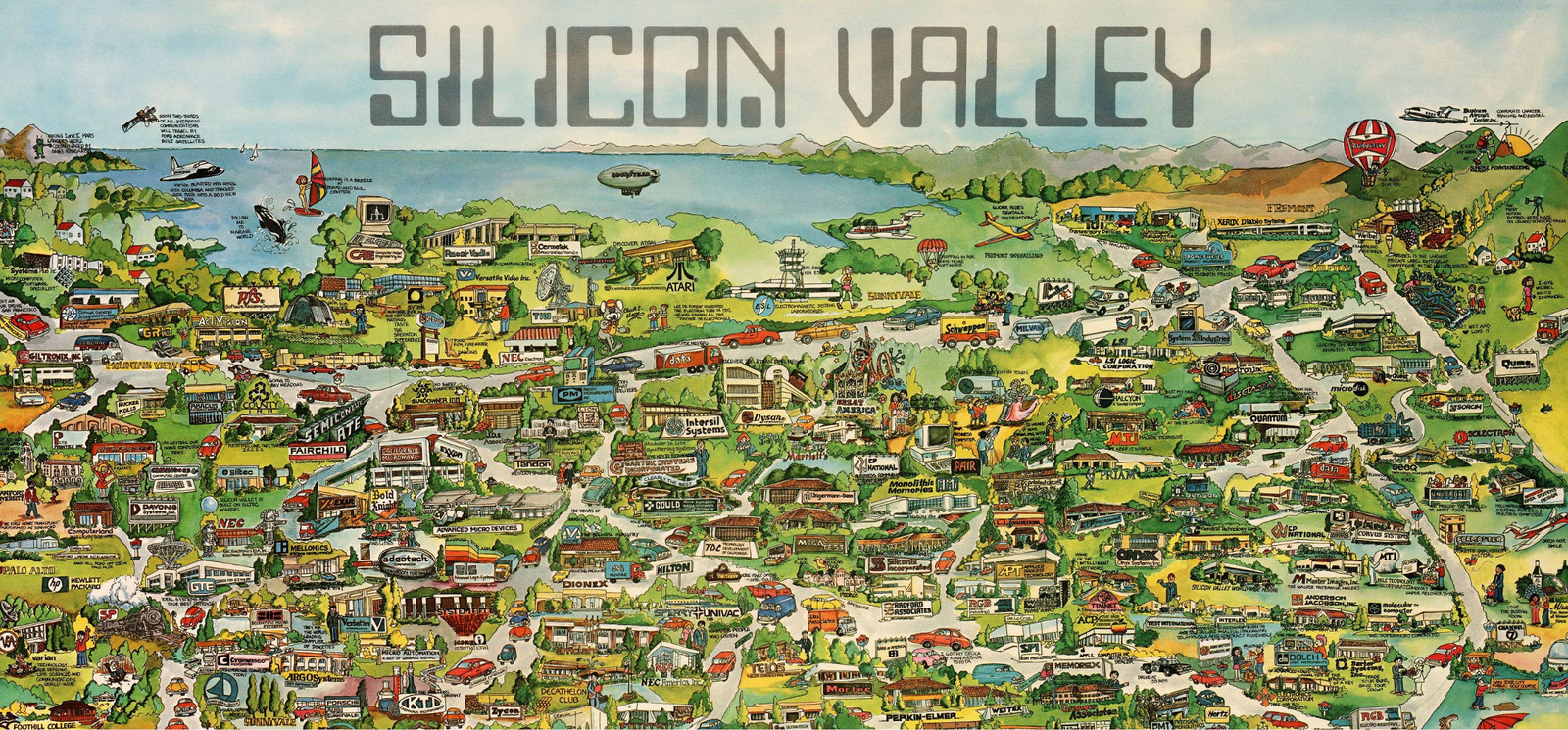Now Reading: Dubai Real Estate 2025: Luxury Homes With Lifestyle-First Designs
-
01
Dubai Real Estate 2025: Luxury Homes With Lifestyle-First Designs
Dubai Real Estate 2025: Luxury Homes With Lifestyle-First Designs
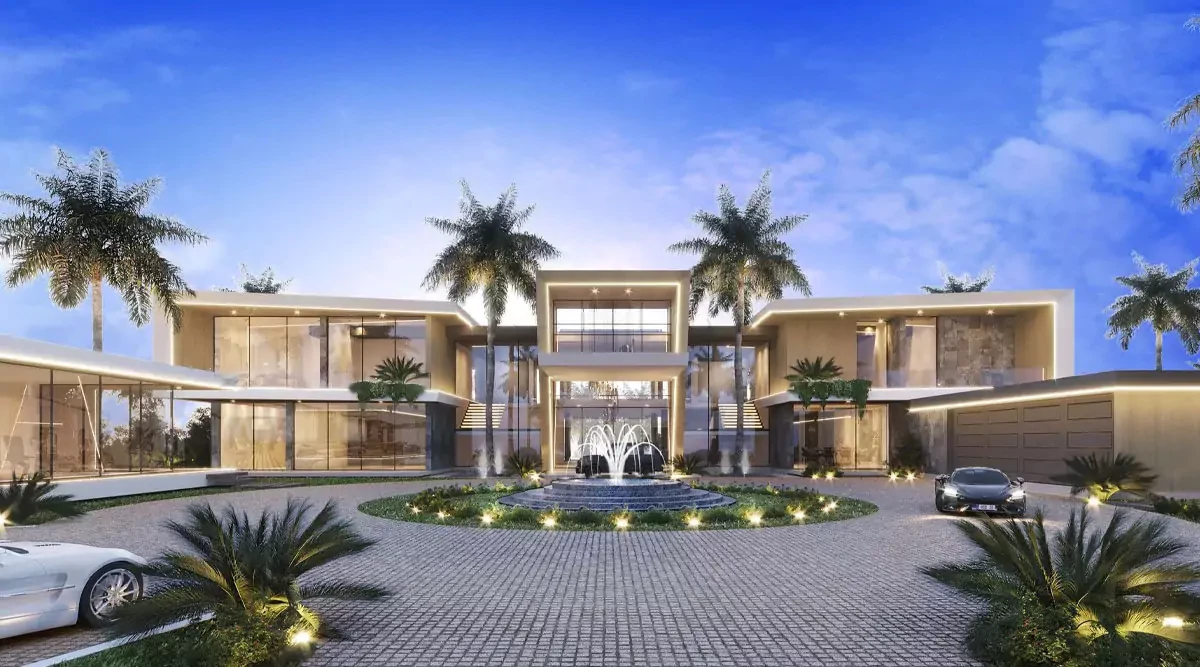
Table of Contents
Imagine waking in your Dubai home, where a smart system softly opens the blinds to reveal a golden sunrise over a serene waterfront, your coffee brews with a gentle voice command, and floor-to-ceiling windows frame a lush private garden or a glittering city skyline. You step out for a yoga session in a tranquil pavilion, entertain friends in a sleek, tech-infused lounge, or relax by an infinity pool with panoramic views, all within a residence that feels like a seamless extension of your sophisticated, wellness-focused life.
In 2025, Dubai’s luxury homes in exclusive communities like Palm Jumeirah, Emirates Hills, and Dubai Hills Estate are redefining real estate with lifestyle-first designs, blending opulence, technology, and wellness. These properties are driving a market boom, with 96,000 transactions worth $87 billion in the first half, 58% fueled by high-net-worth buyers from the UK, India, Russia, and China.
Offering 100% freehold ownership, a dirham pegged to the U.S. dollar, and no personal income tax, capital gains tax, or annual property taxes, these homes priced from $1 million to $10 million deliver 5-7% rental yields and 8-12% price appreciation, outpacing London (2-4%) and New York (2-3%). Properties over $545,000 qualify for a 10-year Golden Visa, while smaller units grant 2-year residency.
Powered by 25 million tourists and a 4% population surge, these homes integrate smart technology, wellness-focused amenities, and sustainable designs to create residences that are as prestigious as they are nurturing. Navigating fees, VAT, and 2025 regulations is key to securing your place in these radiant, lifestyle-driven havens.
Lifestyle-First Designs Redefining Luxury
Located 5-20 minutes from hubs like DIFC via Sheikh Zayed or private water taxis, luxury homes in Palm Jumeirah offer lifestyle-first ecosystems with vacancy rates of 1-2% compared to 7-10% globally. A $2 million villa yields $100,000-$140,000 annually, tax-free, saving $37,000-$63,000 versus the U.S. (37%) or UK (45%). Selling for $2.4 million (20% appreciation) delivers a $400,000 tax-free profit, saving $80,000-$112,000 compared to London (20-28%) or New York (20-37%).
No property taxes save $20,000-$100,000 yearly, unlike London’s council tax (up to 2%) or New York’s property tax (1-2%). Residential purchases skip 5% VAT ($50,000-$500,000), and features like private wellness hubs and smart terraces drive 8-12% price growth. These homes attract high-net-worth buyers seeking vibrant, luxurious lifestyles in prime locations.
Living here feels like embracing a radiant, nurturing sanctuary.
Smart Technology for Seamless Luxury
Smart technology is at the core of these homes, with Emirates Hills featuring AI-driven villas that optimize lighting, climate, and security via apps or voice commands for a seamless, opulent experience. These $1 million-$10 million properties yield $50,000-$700,000 annually, tax-free, saving $18,500-$315,000 compared to taxed markets. Short-term rentals, boosted by 25 million tourists visiting landmarks like Burj Al Arab, require a DTCM license ($408-$816), increasing yields by 10-15% ($5,000-$105,000).
Long-term leases, popular with affluent families, need Ejari registration ($54-$136). Non-compliance risks fines up to $13,612, so licensing is critical. Features like virtual concierges, IoT-enabled appliances, and biometric wellness trackers boost appeal, with 90-95% occupancy rates driven by demand for tech-enhanced luxury homes. A 4% DLD fee ($40,000-$400,000), often split, applies, but zero capital gains tax saves $80,000-$600,000 on $400,000-$3 million profits.
Smart homes feel like a vibrant extension of your luxurious lifestyle.
Wellness Amenities for Holistic Serenity
Wellness amenities are central to these homes, with Dubai Hills Estate offering private yoga pavilions, smart fitness trails with biometric sensors, and tranquil lounges with air purifiers and meditation spaces. These $1 million-$10 million properties yield $50,000-$700,000 annually, tax-free, saving $18,500-$315,000.
Maintenance fees ($10,000-$50,000) cover wellness hubs, private gardens, and smart security systems. Selling a $2 million villa for $2.4 million yields a $400,000 tax-free profit, saving $80,000-$112,000 versus London or New York. With 8-12% price growth driven by wellness-focused buyers, these homes cater to those seeking serene, luxurious lifestyles, supported by proximity to vibrant hubs like Jumeirah Beach, just 5-15 minutes away.
Wellness amenities feel like a warm embrace for your mind and body.
Sustainable Designs for a Prestigious Future
Sustainability is seamlessly woven into these homes, with Palm Jumeirah featuring solar-powered systems, water recycling, and green terraces aligned with Dubai’s net-zero goals by 2050. These $1 million-$10 million properties yield $50,000-$700,000 annually, tax-free, saving $18,500-$315,000. No property taxes save $10,000-$100,000 yearly, and VAT exemptions save $50,000-$500,000 on purchases.
Maintenance fees ($10,000-$50,000) cover eco-friendly amenities like EV charging stations and smart irrigation. Selling a $2 million villa for $2.4 million yields a $400,000 tax-free profit, saving $80,000-$112,000. With 8-12% price growth driven by eco-conscious luxury buyers, these homes attract investors seeking prestigious, sustainable residences.
Sustainable designs feel like a vibrant step toward an opulent tomorrow.
No Personal Income Tax: Rentals That Thrive
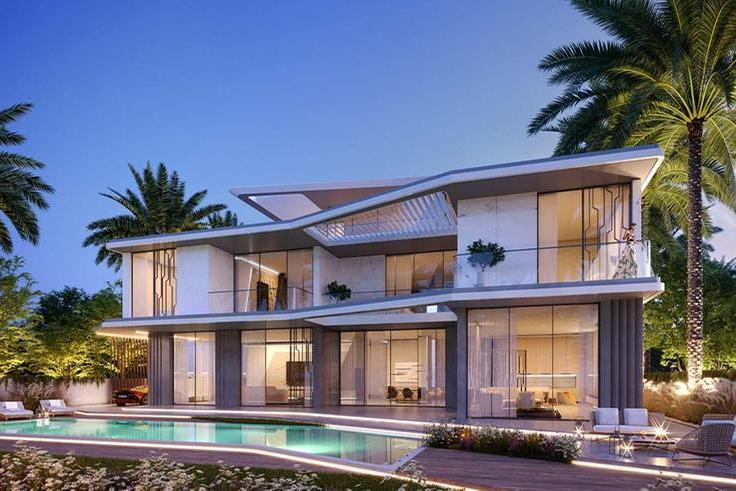
Dubai’s no personal income tax policy lets you keep 100% of rental income, unlike the U.S. (up to 37%) or UK (up to 45%). A $1 million Dubai Hills Estate villa yields $50,000-$70,000, saving $18,500-$31,500; a $10 million Palm Jumeirah villa yields $500,000-$700,000, saving $225,000-$315,000. Short-term rentals, fueled by tourists visiting luxury hubs, require a DTCM license ($408-$816), boosting yields by 10-15%.
Long-term leases, ideal for affluent families, need Ejari registration ($54-$136). A 5% municipality fee on rentals ($2,500-$35,000) applies, but non-compliance risks fines up to $13,612. Wellness and sustainable amenities drive 90-95% occupancy in 2025, making these homes rental powerhouses.
Tax-free rentals feel like a refreshing wave of prosperity.
Zero Capital Gains Tax: Profits That Soar
Zero capital gains tax lets you keep 100% of sale profits. Selling a $2 million Emirates Hills villa for $2.4 million yields a $400,000 tax-free profit, saving $80,000-$112,000 versus London (20-28%) or New York (20-37%). A $10 million villa sold for $12 million delivers a $2 million tax-free gain, saving $400,000-$560,000. With 8-12% price growth driven by luxury and wellness trends, these properties outperform global markets, where similar homes rarely exceed $5 million. A 4% DLD fee ($40,000-$400,000), often split, applies, but tax-free profits make these homes wealth-building gems.
Keeping every dirham feels like a radiant financial triumph.
No Annual Property Taxes: Ownership That Feels Light
Unlike global markets, these luxury homes impose no annual property taxes, saving $10,000-$100,000 yearly on $1 million-$10 million properties compared to London’s council tax ($5,000-$60,000) or New York’s property tax (1-2%). Maintenance fees ($10,000-$50,000) cover wellness hubs, private estates, and 24/7 security, aligning with 2025’s luxury standards. A 5% municipality fee on rentals ($2,500-$35,000) is reasonable for these prime locations. These low costs make ownership sustainable, supporting a lifestyle that feels vibrant and effortless.
No property taxes feel like a gentle breeze lifting your investment.
VAT Rules: A Savvy Investor’s Edge
Residential purchases skip 5% VAT, saving $50,000-$500,000 on $1 million-$10 million properties, unlike commercial properties or the UK’s stamp duty (up to 12%, or $120,000-$1.2 million). Off-plan purchases incur 5% VAT on developer fees ($5,000-$50,000), recoverable via Federal Tax Authority (FTA) registration ($500-$1,000). Short-term rental operators must register for VAT if revenue exceeds $102,041, charging 5% but claiming credits on DTCM fees ($408-$816). A $1 million villa yielding $50,000-$70,000 incurs $2,500-$3,500 in VAT, with $400-$600 in credits; a $10 million villa yielding $500,000-$700,000 incurs $25,000-$35,000 in VAT, with $1,000-$1,500 in credits. Non-compliance risks fines up to $13,612, so meticulous records are key.
VAT exemptions feel like a clever boost to your savings.
DLD Fees and Title Deeds: Securing Your Luxury Haven
The 4% DLD fee, typically split, applies: $40,000 for a $1 million villa or $400,000 for a $10 million villa. Gift transfers to family or shareholders reduce DLD to 0.125%, saving $38,750-$387,500. For example, gifting a $10 million villa cuts DLD from $400,000 to $12,500. Title deed issuance costs $136-$272, requiring DLD registration. Broker fees, typically 2% ($20,000-$200,000), may be waived for off-plan projects. Mortgage registration (0.25% of the loan, or $2,500-$25,000) and valuation fees ($680-$1,360) apply for financed deals. The 2025 Oqood system ensures escrow compliance for off-plan purchases, protecting your investment.
Title deeds feel like the key to your radiant, luxurious sanctuary.
Corporate Tax: A Business Investor’s Note
Introduced in 2023, the 9% corporate tax applies to businesses with profits over $102,110. A company leasing a $1 million villa yielding $50,000-$70,000 faces a 9% tax ($4,500-$6,300), reducing net income to $45,500-$63,700. A $10 million villa yielding $500,000-$700,000 incurs $45,000-$63,000 in tax. Qualified Free Zone Person (QFZP) status in areas like DMCC avoids this, saving $4,500-$63,000, with setup costs of $2,000-$5,000. Small business relief waives corporate tax for revenues under $816,000 until December 31, 2026. Individual ownership skips this tax, ideal for most buyers.
Corporate tax feels like a soft ripple you can navigate.
New Tax Rules for 2025
The Domestic Minimum Top-up Tax (DMTT), effective January 1, 2025, imposes a 15% tax on multinationals with revenues over €750 million ($793 million). Individual investors and smaller entities are unaffected, and QFZP status avoids DMTT, saving $4,500-$105,000. Cabinet Decision No. 34 refines Qualifying Investment Fund (QIF) rules, exempting corporate tax if real estate income is below 10%. A QIF earning $1 million, with $100,000 from rentals, faces 9% tax ($8,100) on 90% ($900,000). A July 2025 policy allows corporate tax deductions on fair market value depreciation, saving $1,818-$18,182 annually for a $1 million villa revalued at $1.2 million. These rules enhance the appeal of luxury homes.
New tax rules feel like a puzzle with prosperous solutions.
Top Luxury Home Communities in 2025
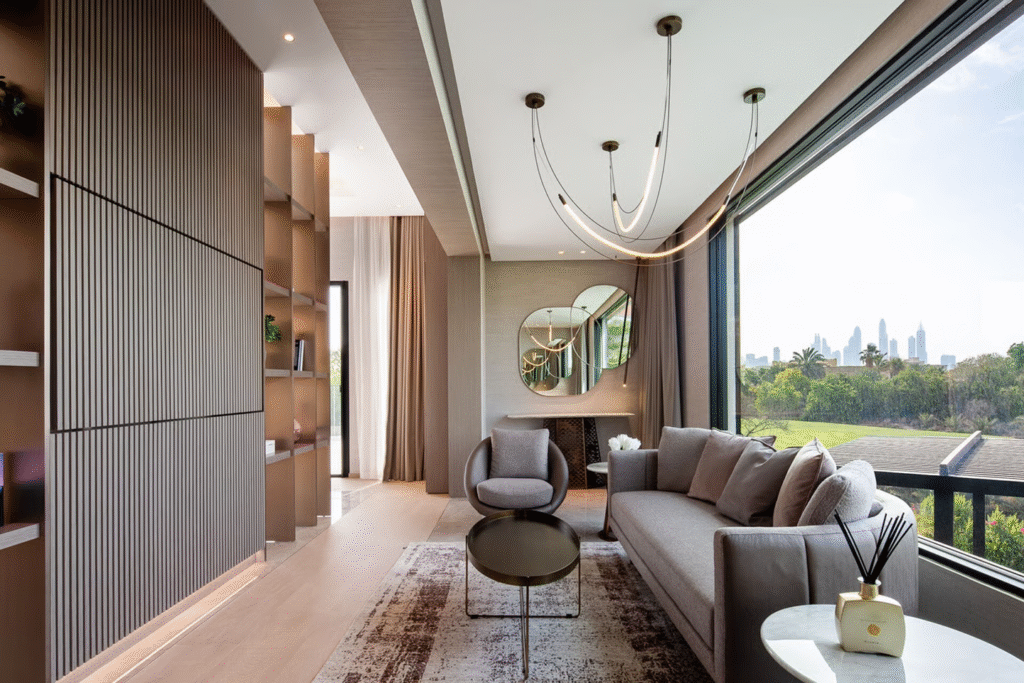
1. Palm Jumeirah: Coastal Lifestyle Haven
Palm Jumeirah ($2 million-$10 million) offers 5-7% yields and 8-12% price growth, featuring villas with private beaches and smart wellness systems. A $2 million villa yields $100,000-$140,000 tax-free, saving $37,000-$63,000. Selling for $2.4 million yields a $400,000 tax-free profit, saving $80,000-$112,000. No property taxes save $20,000-$100,000, and VAT exemption saves $100,000-$500,000. Maintenance fees are $15,000-$50,000, with a 5% municipality fee ($5,000-$7,000). QFZP saves $9,000-$12,600. U.S. investors deduct depreciation ($36,364-$181,818), saving up to $63,636. Its coastal allure draws Russian and Chinese buyers.
Palm Jumeirah feels like a radiant, luxurious masterpiece.
2. Emirates Hills: Elite Gated Retreat
Emirates Hills ($3 million-$10 million) offers 5-7% yields and 8-12% price growth, featuring villas with private estates and wellness hubs. A $3 million villa yields $150,000-$210,000 tax-free, saving $55,500-$94,500. Selling for $3.6 million yields a $600,000 tax-free profit, saving $120,000-$168,000. No property taxes save $30,000-$100,000, and VAT exemption saves $150,000-$500,000. Maintenance fees are $20,000-$50,000, with a 5% municipality fee ($7,500-$10,500). QFZP saves $13,500-$18,900. U.S. investors deduct depreciation ($54,545-$181,818), saving up to $63,636. Its elite vibe draws UK and Indian buyers.
Emirates Hills feels like a vibrant, exclusive sanctuary.
3. Dubai Hills Estate: Luxury Lifestyle Gem
Dubai Hills Estate ($1 million-$5 million) offers 5-7% yields and 8-12% price growth, featuring villas with private pools and smart wellness hubs. A $1 million villa yields $50,000-$70,000 tax-free, saving $18,500-$31,500. Selling for $1.2 million yields a $200,000 tax-free profit, saving $40,000-$56,000. No property taxes save $10,000-$50,000, and VAT exemption saves $50,000-$250,000. Maintenance fees are $10,000-$30,000, with a 5% municipality fee ($2,500-$3,500). QFZP saves $4,500-$6,300. U.S. investors deduct depreciation ($18,182-$90,909), saving up to $31,818. Its lifestyle appeal draws global buyers.
Dubai Hills Estate feels like a warm, opulent embrace.
Why These Luxury Homes Shine
Price Range: Dubai Hills Estate ($1 million-$5 million) suits mid-tier luxury buyers; Palm Jumeirah ($2 million-$10 million) and Emirates Hills ($3 million-$10 million) appeal to high-net-worth buyers.
Rental Yields: 5-7%, with Palm Jumeirah at 5-7% for short-term rentals; others at 5-6% for stable leases.
Price Appreciation: 8-12%, driven by luxury and wellness trends.
Lifestyle: Smart systems, wellness hubs, and private estates create opulent living.
Amenities: Private pools, yoga pavilions, and tranquil lounges enhance appeal.
ROI Verdict: 8-12% ROI, blending luxury with stellar returns.
Investing here feels like embracing a radiant, luxurious legacy.
Strategies to Maximize Returns
For individuals: Hold properties personally to avoid corporate taxes, saving $4,500-$63,000. Negotiate DLD fee splits, saving $20,000-$200,000. Use gift transfers to reduce DLD to 0.125%, saving $38,750-$387,500. Recover 5% VAT on developer fees via FTA registration ($500-$1,000). Leverage double taxation treaties with 130+ countries, saving $18,500-$315,000. U.S. investors deduct depreciation ($18,182-$181,818), saving up to $63,636. For corporates: Secure QFZP status, keep QIF income below 10%, and claim depreciation deductions. Hire property managers ($10,000-$50,000 annually) and tax professionals ($1,000-$3,000) to avoid fines up to $136,125. Focus on short-term rentals in Palm Jumeirah, long-term in Emirates Hills.
These strategies feel like a roadmap to your vibrant wealth.
Risks to Watch in 2025
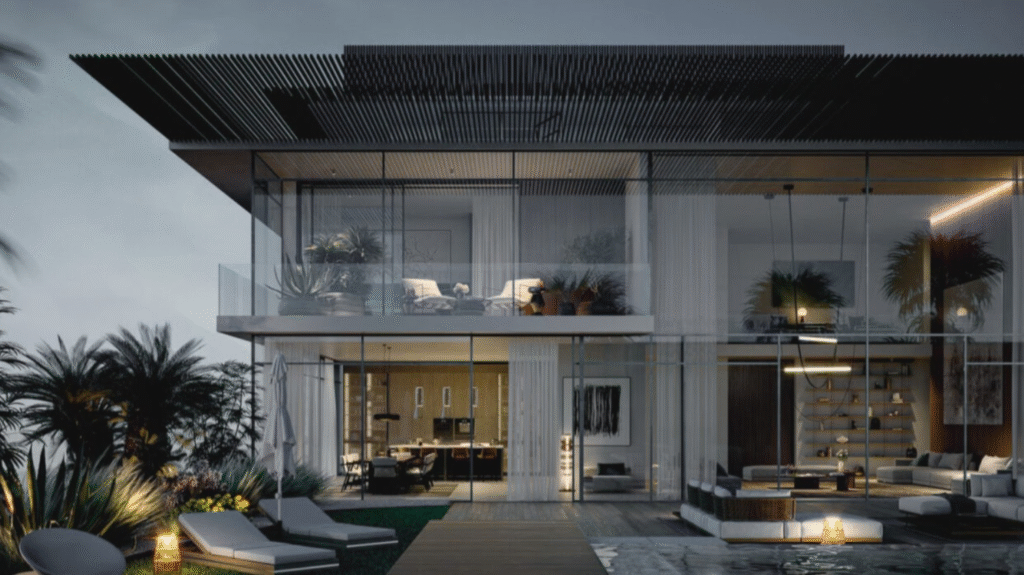
A projected oversupply of 182,000 units by 2026 may slightly slow price growth in newer Dubai Hills Estate phases, but Palm Jumeirah and Emirates Hills remain resilient due to their lifestyle-first appeal. Off-plan delays risk setbacks, so choose trusted developers like Emaar or Nakheel and verify escrow compliance via the 2025 Oqood system. Non-compliance with VAT or DTCM rules risks fines up to $13,612, and corporate tax errors can cost $136,125. Indian investors must report properties in India’s Foreign Asset schedule to avoid $135,000 penalties. Currency fluctuations, though minimal with the dollar peg, could impact returns.
Why These Luxury Homes Are Worth It
With 8-12% ROI, 8-12% growth, and tax-free savings of $10,000-$500,000 annually, Dubai’s luxury homes Palm Jumeirah, Emirates Hills, and Dubai Hills Estate offer opulent residences, lifestyle-first designs, and global appeal. Golden Visa perks, 90-95% rental occupancy, and a lifestyle blending luxury with wellness make them 2025’s top real estate choices. Navigate fees, secure your lifestyle-driven haven, and invest in Dubai’s radiant future.
read more: Lifestyle Communities in Dubai Offering Exclusive Clubhouse Experiences



